Even though it wasn’t until the 1890s that his grandfather, Antone Chiramba, left the Azores and settled on the Vineyard, seventy-eight-year-old John Alley is as much a scion of West Tisbury as any Athearn or Mayhew of pre-Revolutionary stock. He’s served in almost every public job the town has to offer, including a nearly three-decade stint on the board of selectmen. As a justice of the peace it’s been said often that he most likely has married more Vineyarders than anyone on record. As a longtime town columnist for the Vineyard Gazette he’s passed along all manner of worthy, if not always exactly newsworthy, morsels of information on his fellow townspeople. He was even a ringleader in the brief attempt by Islanders to secede from the Commonwealth of Massachusetts.
As if that weren’t enough, West Tisbury’s landmark Alley’s General Store bears his family name. And thereby hangs another John Alley tale. Or, rather one should say, another long and winding John Alley tale. For in addition to all of the above, Alley is a raconteur of the first order. He is perhaps the Island’s best dinner guest through the languorous winter months before the arrival of spring, even if admittedly no other guests are likely to get a word in edgewise.
But would they want to? After all, who else on the Island can tell tales of a clammy hand grasping his shoulder when he was a teenager digging a grave in the West Tisbury cemetery? Or describe the wedding he performed on a Chilmark beach for a naked groom with a Mohawk haircut and a naked bride with a glittering stud in one breast? (The Japanese tourists who happened by during the ceremony later reported to him that it was the “best thing of whole vacation!”) Of course, his tales are every bit as good in any season. And they not only entertain, they inform.
“My grandfather, when he first came to the Island, lived in Oak Bluffs and fished and sold the fish that he caught from a cart. A lot of what he sold was halibut. Of course, his English was just so-so and he’d call out ‘Alleybut, Alleybut’ as he went down Wing Road and Vineyard Avenue, and pretty soon people were saying, ‘Here comes Alley with his fish wagon,’ so he changed his name from Chiramba to Alley. It was certainly a lot simpler.”
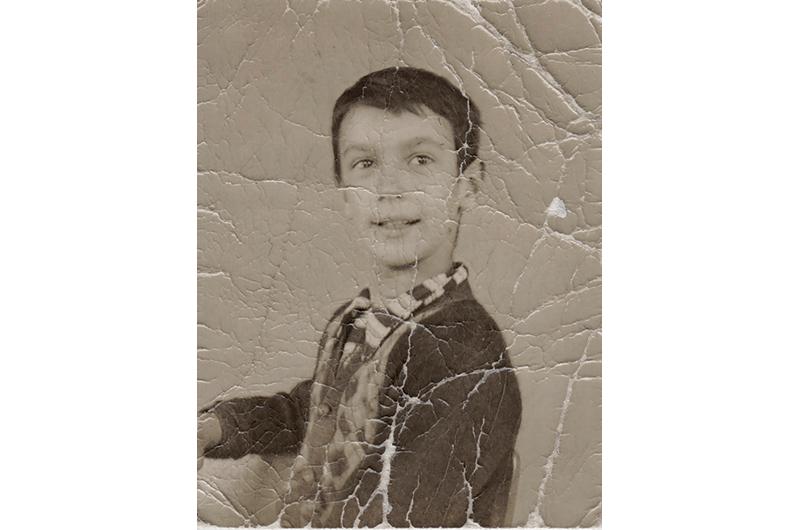
Sometime around 1903, Alley isn’t certain exactly when, his grandfather gave up the fish business and went to work as a day laborer for James Cleveland of West Tisbury. Cleveland, who was a retired whaleship captain with sizable holdings in the town, eventually sold him twelve acres on which to start what would become a large family with his new wife, Mary Silva of Oak Bluffs.
“Soon my grandfather began farming it, and in what was then a bog he planted cranberries,” Alley continued. “This was all across from the Mill Pond and sort of in back of today’s garden club. Next, he built a barn, and upstairs there was an apartment where he and my grandmother and my father, who was the first baby, lived. But as the family grew – there were seven children altogether – my grandfather built a full-scale but a very simple house nearby. We used to say it was ‘on the hill,’ though it wasn’t much of a hill, and it was there that my Aunt Lil – who eventually married George Magnuson – and my other aunts, Edna and Evelyn and Louise, and my uncles, Norman and Fred, grew up.
“Then, after awhile, my grandfather asked Donald Campbell, who owned the land where the Field Gallery is now, if he could grow corn and other vegetables there. In exchange, Mr. Campbell was to get some of what got grown. It all worked out very well. My uncles and aunts were still children then, and they’d pick the vegetables and they’d be piled into my grandfather’s Model T truck and he’d drive it down to Oak Bluffs and sell what he’d grown at Alley Brothers Store on Montgomery Square behind Circuit Avenue. It was a store that belonged to cousins of his who’d taken the Alley name too.
“Then my father, Albion, about the time he was eighteen, began selling vegetables up here at S.M. Mayhew’s. That was the general store’s name then. For years, store deliveries to customers had been made in a horse-drawn cart, but then Sanderson and Ulysses Mayhew, the owners, bought a Model T for more efficient delivery. They knew my father could drive one, so they hired him. He’d drive up to Gay Head and Indian Hill and Chilmark and find out what people wanted and then go back to West Tisbury and fill the orders and drive back up-Island with them. It was a long trip on dirt roads when he began doing it.”
It was while making deliveries down near the great pond in West Tisbury that twenty-one-year-old Albion met twenty-one-year-old Mary Anne Flight from Newfoundland. She had come to the Vineyard as a domestic and was working near the great pond for two women who summered on the Island. They were so taken with their Canadian helper that they wanted to make sure she didn’t get homesick. Thinking the solution would be to find her a beau, they suggested the young deliveryman from S.M. Mayhew’s. They proposed that she might like to go to a movie with him, but Mary Anne said she didn’t think so. The next suggestion was that she go for a ride with him in his new car. Mary Anne said no.
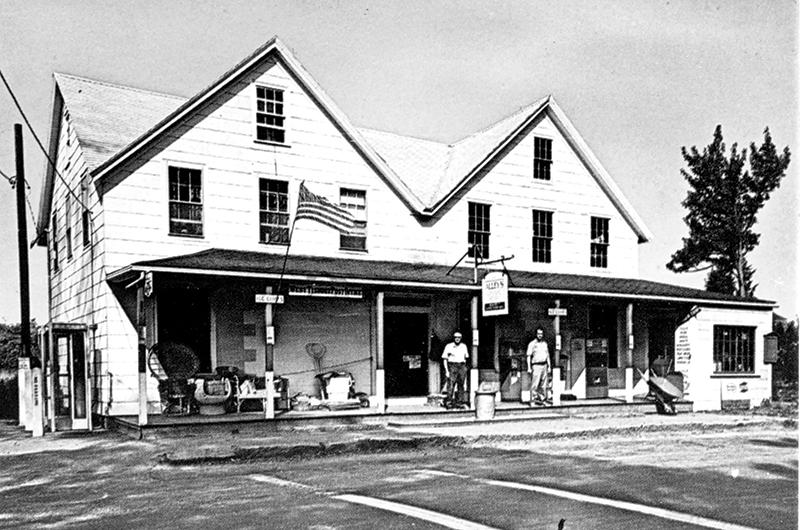
But one Sunday she was taking a walk at a time when Albion (better known as Beanie) had his car out for a spin. He stopped and asked her if she’d like to go for a ride, and she agreed. They drove to Chilmark, Gay Head, and the lighthouse. On the way home, she recalled decades later to the Vineyard Gazette, “I said to myself, ‘This Beanie Alley is the nicest man I ever met.’
“That was the first of July, and he wanted me to spend the Fourth of July with him,” she continued. He told her there would be a dance band at the Tivoli Dance Hall in Oak Bluffs and a parade. They went together. “I fell in love with that Beanie Alley.”
On October 20, 1923, just four months after they had met, Albion and Mary Anne were married at the Chilmark church. “It all happened the way it did to those fairy tale princesses,” she later recalled.
Two years later, Charlie Turner of West Tisbury became sole proprietor of S.M. Mayhew’s General Store, and Albion continued working for it. In 1945, when Albion finally became its proprietor, he didn’t change the name for quite some time out of respect for Turner, who had kept the store name S.M. Mayhew’s until the original owners had died. But after eight years of owning the business, Albion was ready for his name to be up there, and in 1953 (four years before Turner died) the Turner name came down and Albion Alley & Co. was affixed above the general store door.
The “& Co.” were John Alley and his brother and sisters. Alley was born four days before the December 7, 1941 attack on Pearl Harbor and moved when he was four with his family into the house he currently lives in across from the town hall. As soon as he was old enough to crank the handle of the cash register, he remembers, he had a job at the store.
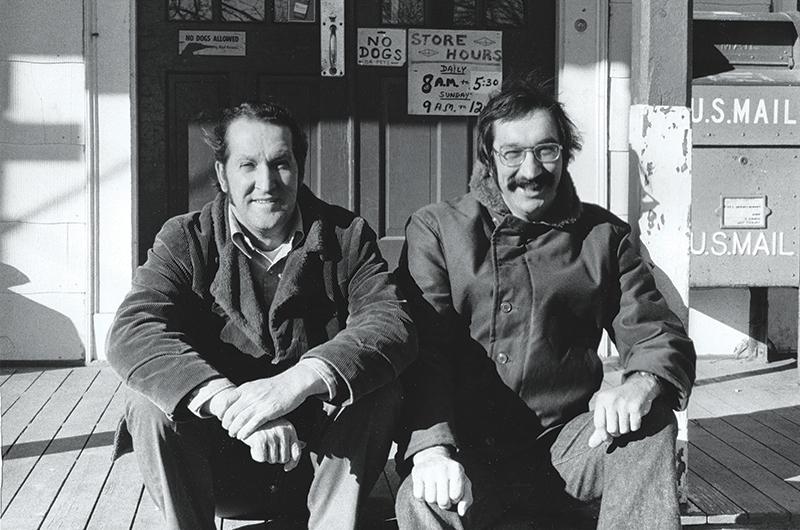
“By 1947, when I could read and count and greet people, I was put to work. I especially remember the Magay sisters, who lived across from the Riggs’ house on the road to Edgartown. They used to telephone in their orders on Saturdays and my job was to gather up everything they wanted and put it in a cardboard box and put that in the back of the store truck.”
Sometimes his father took him along on the deliveries, “and if I’d done everything right, we’d go to Ole Borgen’s and Maud Call’s where the big tree is in North Tisbury. Maud made and sold ice cream and I’d get an ice cream cone, and Ole had an accordion that he used to play – except that he only knew one song. The ice cream was very good, but sometimes there were dog hairs in it. My father said they were nothing to worry about. I didn’t want to see them. I could just eat coffee ice cream and even if there were hairs in it, I’d never know the difference.”
Though working in the family store was his favorite employment growing up, early on he adopted what became a lifelong habit of juggling many jobs. He mowed lawns along Music Street and painted houses for his Aunt Lil’s husband, George Magnuson. He dug clams with him to sell to Ralph Levinson, who had the popular Kafe in Edgartown. And, yes, we are getting there, he also helped his Uncle Fred, who was the cemetery commissioner, with the grave-digging.
“I was scared to death. There I was, down in the grave, and suddenly there was a cold hand patting my shoulder. It turned out it was Prudie Whiting who’d been looking for some of the family sheep, and had chased them into the graveyard and seen me digging and wanted to let me know the sheep were loose and she hoped, when I got through digging, I could help her catch them.”
Another time Uncle Fred left him to dig a grave late on a blustery afternoon. “All of a sudden I could hear thunder up above and see flashes of lightning. I was ready to leave. I started to climb and the ladder rung broke. I heard more thunder and saw more lightning and I certainly wanted to get out. But I couldn’t.
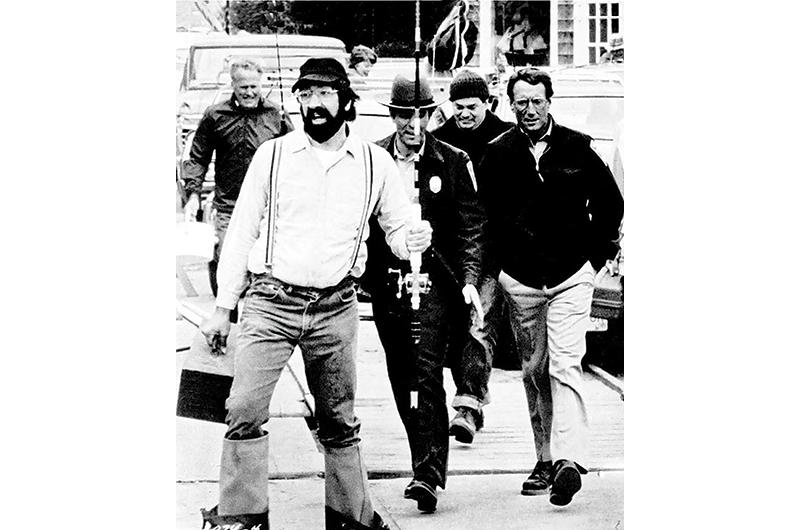
“Then, finally, I heard a truck up above. It was Uncle George. I shouted up to him and told him what had happened between the peals of thunder. He said he’d try to find Uncle Fred to come and help out. Both of them enjoyed their before-supper drinks, and I wasn’t at all sure I wouldn’t be forgotten. But I wasn’t. They came back with a rope that they dangled down. I grabbed it, and they pulled me up, using the truck to do the pulling.”
Appropriately, perhaps, Alley’s graduation from high school coincided with the end of an era for the Island. His class, that of 1959, was the last at the old Tisbury High School, as the regional high school was opened later that fall. Many of his classmates were going off to college, but he didn’t want to.
“Nobody in my family had,” he recalled. “How could you make money and not do anything but sit in a chair, was the way I looked at it.”
His one ambition at the time was to be a radio newscaster like the ones he had grown up listening to as a young boy during the Second World War. He applied to the Cambridge School of Radio Broadcasting in Boston. “I was accepted and passed the course,” he said. “If you did, then they would assign you to a radio station somewhere in the country. They found a job for me in Albuquerque, New Mexico. I didn’t like that idea. I didn’t want to go off to Albuquerque, New Mexico. I didn’t know where in hell it was then, so I came back home.”
There weren’t a lot of jobs for newscasters on the Vineyard and he didn’t, at first anyway, want to return to working at his father’s store. He pumped gas for a time at his brother Albion’s station, which was where Up Island Automotive is today, and he worked for Daniel Manter, who was renovating the West Tisbury Congregational church. While removing the old tin ceiling in the sanctuary he discovered that, unbeknownst to anyone, the previous ceiling had been painted with an elaborate decorative compass rose, which he was unceremoniously told to knock down as well. He regrets to this day not having hurried home for his camera to take a picture of it and still wonders about it. Maybe, he speculates now, it was painted there because so many ships’ captains lived in the town, noting that Music Street was so named because so many captains came home from trips with pianos for their daughters and that you could hear the pianos being played up and down the street.
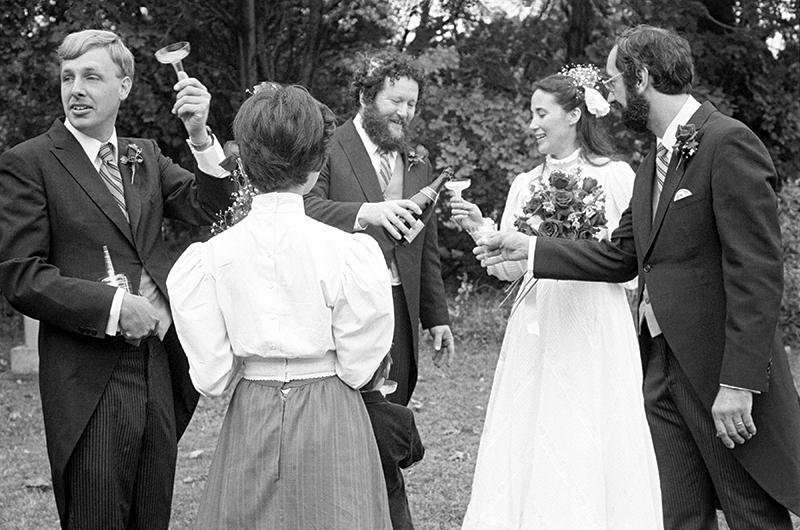
Eventually, perhaps inevitably, he went back to work in the store, which turned out to be the perfect place for him. His father was there; so were his sister Phyllis and his brother Jim. There was a full post office at Alley’s then, of which his father was postmaster, and a laundromat where 7a Foods is now. Everyone in West Tisbury came to Albion Alley & Co. at some point.
Alley remembered, and seemingly still pretty much does remember, every customer’s name, even if they were only summer visitors. “In those days you built a special rapport with the summer customers. You knew what people wanted and didn’t want. You sold Aladdin oil lamps that put out more light than other lamps. Those were especially good for people who had camps down on Tisbury Great Pond. We sold lots of cigarettes, and soda, and cans of soup, of course, as well as kerosene lamps.
“The ’70s were still the time of the Vietnam War and Secretary of State Robert McNamara had bought a house in Chilmark, and he and his wife used to come in. And Scotty Reston, who was the Washington bureau chief of The New York Times, had bought the Vineyard Gazette from Henry Hough. Scotty and his wife Sally had a house in Edgartown, but they’d come to the store, too, when they were in West Tisbury – at least after Scotty arranged it so we could sell The New York Times at the store. He came in once looking for it and I told him only Leslie’s Drugstore in Vineyard Haven had a right to sell it on the Island. ‘We’ll see about that,’ he said, and the next thing I knew we were getting The New York Times to add to the papers we sold.”
Alley got the idea of going into Vineyard politics after his brother Jim became a West Tisbury selectman. Liking numbers, Alley ran for the town finance committee in 1966 and in time he became its chairman. When his brother had to give up his selectman’s seat in 1965 after taking over his father’s job as postmaster at the store, Dr. Milton Mazer (who would become the town’s moderator in 1967) suggested Alley might want to run for the office.
In 1976 he won. “I said I didn’t want to run. I wasn’t sure I could handle it,” he recalled. “But it turned out that even though I hadn’t filed any papers to run, Frank Kernick and Willis Gifford were sponsoring me for selectman with a sticker campaign. You could just put a sticker with my name on it on the ballot instead of having to write my name in. And election night, after all the ballots had been counted, George Manter and Willis and Frank showed up at my door in George’s Jeep and they told me that I’d won. For the next twenty-seven years I was a selectman.”
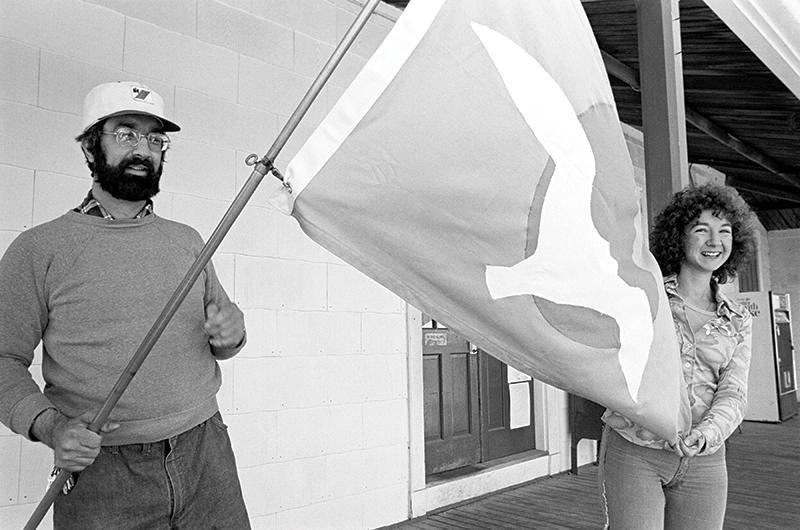
The town was beginning to expand then, he recalled. “Ben Bolt had bought land across from where Cronig’s up-Island market is now and had started building the houses that were the beginning of Island Farms. Then he began building Vineyard Meadows Farm near the airport. And there were other developments. Freddy Ferro and Arthur Silva started two on Old County Road. Developments were springing up all over the place.
But probably the most memorable political event of those decades was when the Island towns rebelled against Massachusetts. “We were fighting for the Kennedy Bill to save the Island from over-development. It turned out, when I was a selectman, that we voted to secede from the Commonwealth in 1977 because they were redistricting and trying to cut back on the number of districts with representation.
“Up to then, the Vineyard and Nantucket had had their own representatives. They wanted us to be linked in with the Cape for representation. I was furious and several of us at the All-Island Selectmen’s meeting suggested that we secede. We all voted that we would, and the governor of Vermont, who sometimes came to the Vineyard and used to stop in at the store, asked if we would like to be part of his state. The national press picked up the story and it made quite a stir. Soon Hawaii was interested in acquiring us too. It was pretty exciting.”
The Vineyard had its own patented flag designed by Fran Forman in blue, black, and orange. It had a rising sun and a seagull on it. And a poster reading “Free Martha’s Vineyard!” was designed by Sally French.
“We rode the crest of the news story until darned near summer,” Alley later told a reporter.
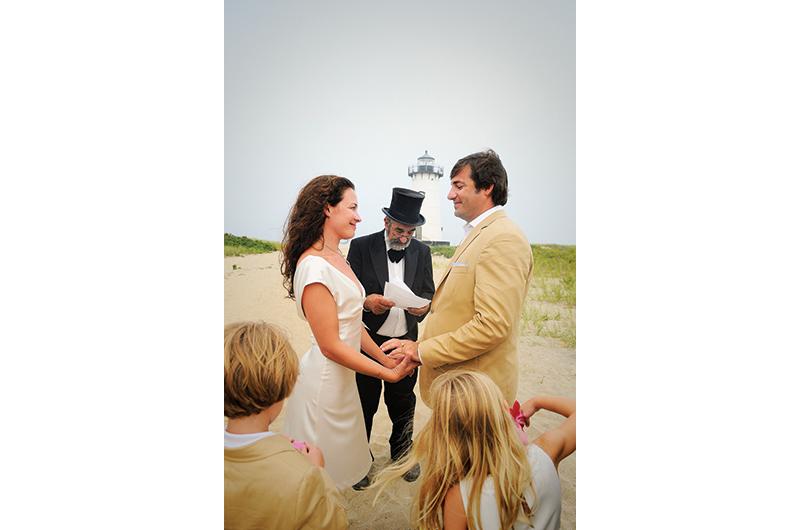
The end of the 1970s through the beginning of the 1980s was a busy time for him. Not only was he a storekeeper and a selectman dealing with expanding development and possible secession, but in 1978 he became a justice of the peace and began performing weddings.
“There was only one notary public in West Tisbury at the time, and her office hours were only Saturday afternoons,” Alley recalled. Store patrons had murmured to him occasionally that it would be nice to have a more available notary to sign official papers. Alley had decided to help out and become a notary.
He was en route to the Dukes County courthouse with his notary public application papers filled out when he ran into artist Allen Whiting, also of West Tisbury. Whiting told him he was about to get married and that he and his fiancée, Lynne Erickson, wanted their wedding to be in the Judge Everett Allen Davis house that had belonged to Whiting’s great-uncle, and which is now Whiting’s home and gallery. He was looking for a justice of the peace to perform the ceremony. Instead of filing to become a notary public, why didn’t Alley file to be a justice of the peace, Whiting said. Then he could perform their wedding.
Since that day in 1978, Alley has married 2,520 couples. So far. The weddings have been on virtually every Island beach and jetty, at every Vineyard lighthouse and bandstand. The wedding stories roll out, seemingly endless. In addition to that of the couple who unexpectedly dropped their clothes, there was the one performed en route to Boston aboard a private plane, of which the bride was the pilot. (The plane was on autopilot during the ceremony, he remembered.) There was a Fourth of July wedding in Edgartown, for which Alley had to smuggle the bridal bouquet through the parade-watching crowds in a beer cooler.
There was the one he performed for Robert McNamara’s daughter Margaret at the McNamara home above Lucy Vincent Beach. He instructed the groom to kiss his bride as the service ended. “He did,” Alley remembered, “but then he picked her up and threw her over the cliff – at least that was the way it looked to everyone. Walter Cronkite and his wife were there, and a lot of other notables. But, of course the cliff wasn’t really high, and the bride reappeared.”
Then there was the time he was at a Saturday matinee at the Capawock Theatre in Vineyard Haven and halfway through the film, Capawock owner Benjamin Hall shook him on the shoulder and whispered to him that Alley’s daughter, Nicole, was on the phone with an urgent question. Had he forgotten that he was performing a wedding at the Lambert’s Cove Inn that afternoon, she wanted to know. The bride and groom had been calling to see where he was.
He hurried home to put on his top hat and morning coat, the sort of uniform he has worn since the beginning. “I got into my tux, put on my top hat, and showed up at the inn full of apologies,” he recalled. “By that time, of course, there’d been plenty of champagne flowing and the wedding couple was very forgiving. Even the bride’s mother, who called from London to congratulate the supposed newlyweds, was able because of my delay to listen long-distance to the whole ceremony. She was especially forgiving.
“I got on the phone and apologized for having caused the delay. ‘What movie were you seeing?’ she wanted to know. I told her it had been The English Patient.
“‘Oh, excellent choice,’ she said. ‘I do hope you enjoyed it.’”
By 1980, his siblings Jim and Phyllis, with whom he shared ownership of Alley’s after their father’s death, had tired of the general store business in which they had spent the greater part of their lives. They wanted to sell it. Ever the people-loving younger brother, Alley didn’t at first. But in time he agreed to let the business go. By then he had met Anna Berry, a nurse from Oklahoma. She was at Tufts Medical Center and was renting a Boston apartment from his West Tisbury neighbors, the late Tom and Helen Maley. She came to visit them on the Vineyard and he was taken with her. Almost three years later, they were married.
Their wedding was conventional, nothing like the quirky showstoppers for which Alley by that time had become famous. It was held outdoors at the Field Gallery, with the ceremony performed by the Reverend Francis Sayre, dean of the National Cathedral in Washington, D.C., and a longtime West Chop seasonal resident. The reception was across the street at the Grange Hall. Anna wore a long, summery gown. Alley wore a rented dark suit (and no top hat).
By 1983, the Alleys had become the parents of a daughter, Nicole, and in 1988 of a son, Sam. Anna had adapted so well to her Vineyard environment that she was writing the West Tisbury town column for the Vineyard Gazette.
These days Alley gets his regular “people fix” by performing weddings and writing the West Tisbury column for the Gazette. (He took over the job after his children were grown and his wife returned to nursing.) And, of course, he’s still sorting the mail at Alley’s General Store, which is now owned by the Vineyard Trust. What used to be a full-scale post office at the store is now a contract station where mail and packages are distributed, but where there is no selling of stamps or mailing of packages. That leaves him more time to banter with post box renters.
Then again, no matter how many hats John Alley has worn over the years, one thing has been constant. There has always been time to talk, perchance even to spin a yarn or two.

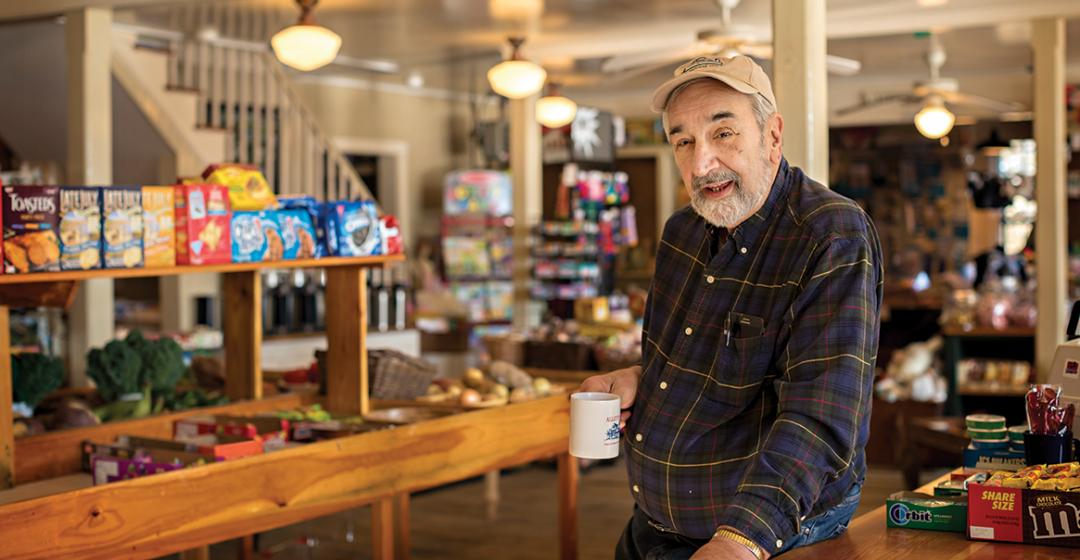


 3 comments
3 comments
Comments (3)